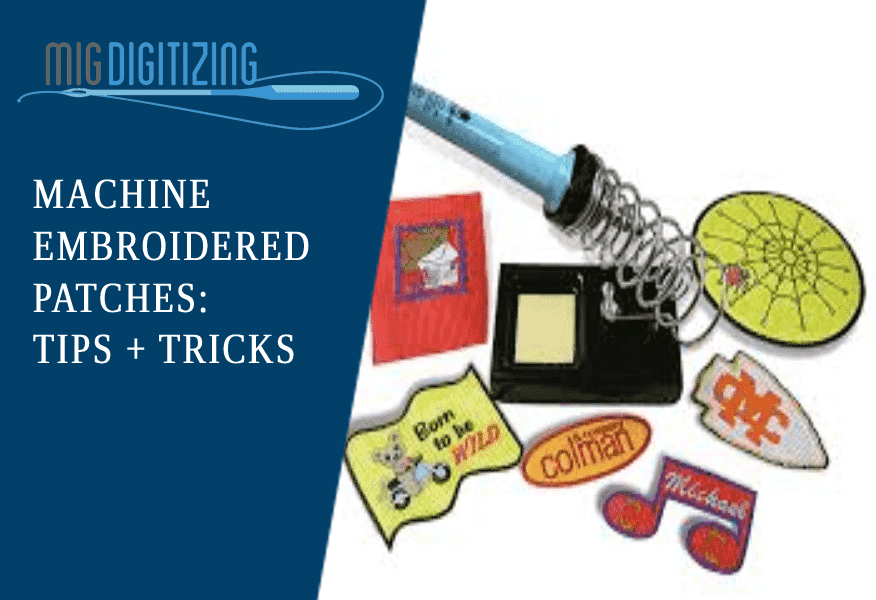
Patches are a quick and easy way to attach needlework to any surface, whether it's for insignia or just for fun.
Felt or twill are the best and most frequent base fabrics for patches, but any durable fabric will embroidered patches for sale are manufactured on specialised equipment. A satin stitch edge finish design is required to produce identical patches at home.
Before you assume that this is just another biased essay attempting to persuade our clients to prefer custom patches over direct embroidery, keep in mind that we provide direct embroidery on polos, dress shirts, t-shirts, and embroidery caps.
Look for designs that have an outline and a satin stitch edge finish that is wide enough to conceal the raw edges. Use a pattern with any width satin stitch edge finish for a non-ravelling cut edge.
Patches, on the other hand, have the advantage of being a more cost-effective solution in the long term than direct embroidery. Direct embroidery on a garment costs between $3 and $10 on average. A left chest patch costs about $.75 to $2 on average. Even after factoring in the cost of sewing the patch onto a garment, which is roughly $.40, the patch is still 20 per cent to 200 percent less expensive than direct embroidery at $1 to $2.50.
Perfect Patch
Frames and border designs that feature a separate stop for a running stitch outline, such as an appliqué or those incorporated into some sewing machines or software, are great for patches.
Remove the embroidery hoop and cut along the stitching line. Cut a piece of fusible fleece and wool that felt larger than the hoop. Allow cooling after fusing the layers together according to the manufacturer's directions.
Embroider the design by hooping the layers together. To draw the shape around the design, use the vellum template. Cut out the shape with sharp scissors directly on the line after unhooking the fabric. Larger than the hoop cut a piece of heavyweight water-soluble stabiliser. Place the stabiliser in the hoop. Embroider the outline of the frame or appliqué. Apply temporary glue to the back of the embroidered form and secure it to the embroidered shape in the hoop. Finish by embroidering the rest of the design. Remove the hoop from the machine once the embroidery is finished, clip the jump stitches, and gently remove the stabiliser.
What Is Direct Embroidery and How Does It Work?
The patch is totally embedded into the material using direct embroidery, making it a “part” of your item. You can't just pull the patch off and put it somewhere else once you've applied it using direct embroidery. In general, if you choose direct embroidery, you won't be able to reuse your patch. You will have to order a new patch if you want to use the patch for something different.
What Is The Distinction Between Embroidery And Direct Embroidery?
When you employ direct embroidery, the patch is totally embedded into the fabric, making it "a part" of your garment. If you utilise direct embroidery to embed the patch, you won't be able to reuse it or reapply it to something else. Embroidered patches, on the other hand, are pressed or sewed onto another piece of fabric, making it easy to remove and allowing you to use the patch elsewhere if desired.
Embroidered Patches Or Direct Embroidery: Which Is Cheaper?
In the long term, embroidered patches are substantially less expensive than direct embroidery and are the most cost-effective solution. You will be able to reuse your embroidered patch in other places, which is not possible with direct embroidery. As a result, if you want to save money while receiving a patch with a number of different types of functionality, embroidered patches are the way to go.
Why Should You Use Embroidered Patches Instead of Direct Embroidery?
Let's imagine you have 20 employees and each one requires 5 outfits with your embroidery digitizing company emblem embroidered on them. That's a total of 100 clothes. Furthermore, uniforms must be replaced at least twice a year in many occupations, such as car mechanics, gardening, and restaurants, because uniforms get dirty. The average cost difference between an embroidered patch and direct embroidery is $1.62, resulting in a savings of $162.
The advantage of an embroidered patch is that it can be readily removed from the garment and re-sewn onto a new one. This is a $3.50 discount, or an additional $350. If a company employs 20 workers and each receives five uniforms, with an average uniform turnover of two times per year, the total savings are $512 per year. You can have the patch re-sewn onto a new garment for $.50 instead of paying an average of $4 to have the embroidery done on a new shirt. For a small business, these are minor but considerable savings.



